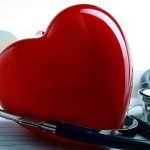

It’s wise to pay attention to pain. That throbbing in your knee could be telling you to go easy on the yard work, and that ache in your head might be your body’s plea for a nap or a tall glass of water. Some types of pain may even be a sign that you need to get to a hospital immediately.
“People have to make a judgment call for themselves, whether they’re going to go to an emergency room or make an appointment with their doctor,” says Robert Hockberger, MD, chair of emergency medicine at Harbor-UCLA Medical Center in Los Angeles. Paying close attention to pain can make that call easier to make. It could even save your life.
Of course, you shouldn’t worry about every ache and twinge. Hockberger offers some general rules of thumb to separate run-of-the-mill pain from the kind that could signal a serious medical problem. “We ask patients to rate their pain from a one to a 10,” he says. “People who feel that their pain is a seven or higher — anything worse than a bad toothache — should see a doctor right away.”
According to Hockberger, you should also see a doctor if you have moderate pain that doesn’t go away within a few days, or if any treatment that previously relieved pain suddenly stops working.
You’ll be way ahead in the guessing game if you familiarize yourself with some serious conditions that cause pain. This list is by no means definitive — a roster of every painful malady could fill a medical book, and probably has — but it’s a good place to start. If you’re alert to these problems, you’re likely to get the help you need.
Contents
Leg Pain With Swelling
Symptoms
One of your legs suddenly becomes painful and swollen. The pain is especially noticeable when you stand or walk around. The swollen area — most likely a calf or thigh — may be red or warm.
What It Could Be
Deep vein thrombosis, a clot forming in a vein deep within the leg. Such clots are dangerous because they can break free and move to the lungs, causing a pulmonary embolism. (In 2003, a pulmonary embolism killed 39-year-old NBC reporter David Bloom.) Deep vein thrombosis most often occurs when a person isn’t moving enough to keep blood flowing briskly through the legs. The condition is sometimes called “economy class syndrome,” because it can strike during a long plane ride. People stuck in hospital beds are also at risk, as are people over 60, women taking birth control pills, women who have recently given birth, and anyone who is overweight.
What You Should Do
Make an appointment to see a doctor immediately. Be sure to tell your doctor if you’ve just finished a long trip or if there is any other reason to suspect a blood clot. Prompt treatment can clear the clot before it has a chance to cause trouble.
Sudden Testicular Pain
Symptoms
As unpleasant as it may be, imagine a swift kick to the groin. The pain, possibly along with swelling, will be on one side of the scrotum. This isn’t just a dull ache. It’s the type of pain that makes it difficult to walk or even talk.
What It Could Be
What You Should Do
Get to a doctor immediately. If you do have testicular torsion, it’s an emergency, because the testicle will become damaged without adequate blood flow.
Painful Urination
Symptoms
You feel pain or a burning sensation when urinating. You may also have frequent urges to urinate without results.
What It Could Be
What You Should Do
Sudden chest pain
Symptoms
You suddenly feel unusual pain, discomfort, or pressure in the center of your chest. The feelings may linger for more than a few minutes, or they may disappear and come back. The pain and discomfort can spread to one or both arms or to the neck, jaw, stomach, or back. Other possible symptoms include shortness of breath, nausea, lightheadedness, or a cold sweat.
What It Could Be
Be aware that most heart attacks start much more slowly than the Hollywood variety — you’re more likely to feel a dull or vague pressure in the chest than a sharp pain. Some heart attacks are so subtle that it can be hard to tell then apart from simple indigestion or heartburn, Hockberger says. In many cases, it takes an EKG or other hospital test to tell the difference.
What You Should Do
The Worst Headache Of Your Life
Symptoms
Picture your worst headache — even a skull-splitting migraine — and imagine turning it up several notches. This mega-headache can strike suddenly, “like a thunderclap,” Hockberger says. Other possible symptoms include double vision, nausea, vomiting, and a stiff neck.
What It Could Be
It could be just a bad migraine, but it could also be a ruptured aneurysm, bleeding in the brain that occurs when a weak spot in a blood vessel suddenly bursts. While migraines can cause similar symptoms, Hockberger notes that most people with migraines have their first episode before they turn 25. Doctors hear alarm bells when a person over 25 has the first killer headache of his or her life.
Every year, about 30,000 people in this country develop ruptured aneurysms. According to a report from Johns Hopkins Medical Institute, half of all ruptured aneurysms cause sudden death, but over 80 percent of patients who can make it to the hospital survive.
Anyone of any age can suffer a ruptured aneurysm, but they are more common in adults than in children. Smokers, people with hypertension, and people who abuse alcohol or illegal drugs are at especially high risk.
What You Should Do
A Stiff Neck Accompanied By Fever And/Or A Severe Headache
Symptoms
Many different things can cause sudden pain or stiffness in the neck. But if your neck trouble is accompanied by either a fever or a severe headache or both (often with sensitivity to light), you could be facing an emergency.
What It Could Be
What You Should Do
Sudden, Sharp Pain In The Abdomen
Symptoms
You have pain that starts at the center of the abdomen, usually in the area around the belly button. It eventually becomes more severe and shifts to the lower right side of the belly, making it painful to the touch. You may also have nausea, vomiting, a low-grade fever (under 100 degrees) diarrhea, constipation, inability to pass gas, swelling in the abdomen, and a lack of appetite. Eventually, it may become so painful that it hurts to move. You may even feel like someone has put a knife or a bullet in your guts — from the inside.
What It Could Be
The pain could also be a symptom of an inflamed gallbladder or pancreas. Just like an inflamed appendix, the gallbladder can rupture if it is not treated right away. An inflamed pancreas also needs prompt medical attention.
Finally, if you are female, you may have an inflamed ovarian cyst, a pelvic infection, or, if you’re of childbearing age, an ectopic pregnancy.
What You Should Do
Severe Back Pain
Symptoms
Back pain usually goes away on its own, with or without a doctor’s help. But if the pain is sudden, agonizing, and unrelated to exercise or improper lifting, OR if you feel excruciating, highly focused pain on your spine, you may be in the midst of an emergency.
What It Could Be
Intense, pinpoint pain may be a sign of an infection beneath the membrane that covers the spinal cord. This condition, called an epidural abscess, strikes about 10,000 people each year. If not treated promptly, it can cause paralysis of the lower part of the body, sometimes in just a few hours. Epidural abscesses often come on the heels of minor infections, such as infections of the sinuses or urinary tract. People with diabetes and IV drug users are most at risk.
What You Should Do
Nagging foot or shin pain
Symptoms
Your normally full exercise schedule is slowed down by persistent pain on the top of your foot or the front of your lower leg. The pain builds gradually, gets worse when you put weight on your leg, and fades when you rest. If the pain is on the top of your foot, you might also notice swelling on the sore spot.
What It Could Be
What You Should Do
This isn’t a medical emergency, but it’s one time when you don’t want to play through the pain. Schedule an appointment with your doctor or orthopedist to get a diagnosis. If you have a stress fracture, you’ll need to take it easy for a couple of weeks to let your bone heal.
Pain is an imperfect guide to illness. Some conditions are painful but not dangerous, while other very serious conditions may strike with no pain at all. If you do have questions about a pain you have, it’s best to consult your doctor.
[“source=franciscanhealth”]




